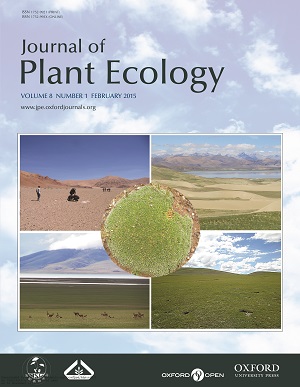Current Issue
-
 Volume 8 Issue 1
Volume 8 Issue 1
The photo combination represents the vegetation type along the gradient from western Northern Tibetan plateau to eastern Northern Tibetan Plateau. Along the 1200 km transect, annual precipitation increases from 50 to 500 mm and vegetation transits from desert to alpine steppe, then to alpine meadow. Photo credit: Yangjian Zhang.
IF: 3.9
CiteScore: 5.7
CiteScore: 5.7
Editors-in-Chief
Yuanhe Yang
Bernhard Schmid
Yuanhe Yang
Bernhard Schmid
CN 10-1172/Q
ISSN 1752-9921(print)
ISSN 1752-993X(online)
ISSN 1752-9921(print)
ISSN 1752-993X(online)







